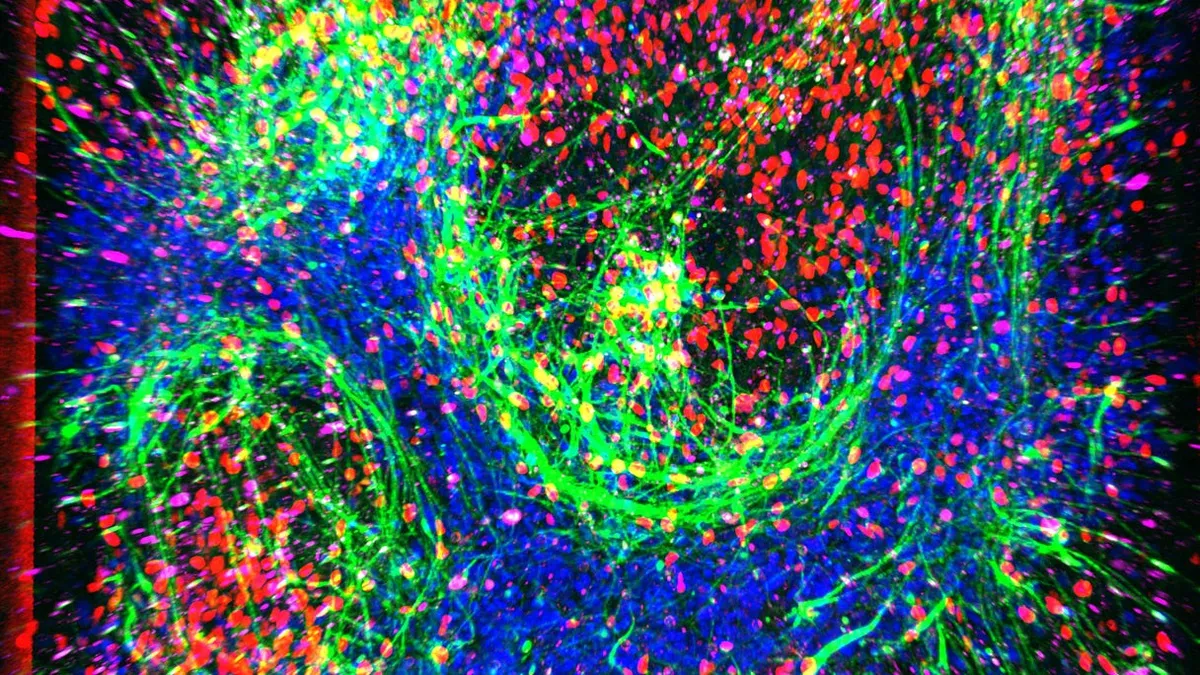
In an exciting breakthrough, scientists have created a pocket-sized model of the most prevalent form of amyotrophic lateral sclerosis (ALS). This innovative disease-on-a-chip, crafted using stem cells, holds the potential to pave the way for new therapeutic options for this progressive condition, according to researchers involved in the study.
Amyotrophic lateral sclerosis is a debilitating disease characterized by the degeneration of motor neurons in the brain and spinal cord, which are responsible for controlling voluntary muscle movements. The deterioration of these neurons leads to a failure in sending signals to the muscles, resulting in severe symptoms such as muscle weakness, paralysis, and difficulties in speaking, swallowing, and breathing.
Published on July 3 in the journal Cell Stem Cell, the study reveals a new model specifically designed to mimic sporadic ALS, which accounts for approximately 95% of all ALS cases. This variant of the disease arises spontaneously without a clear genetic cause or known family history. The newly developed platform is noted for its exceptional accuracy in replicating the early stages of ALS compared to previous laboratory models.
To construct this advanced model, researchers gathered blood cells from young-onset ALS patients, all under the age of 45, alongside healthy male donors, whose cells served as a control for comparison. These blood cells were reprogrammed into induced pluripotent stem cells (iPSCs), which possess the unique ability to differentiate into any cell type within the body. Subsequently, the stem cells were transformed into spinal motor neurons, which are crucial for movement but are prone to degeneration in ALS.
Additionally, a second set of iPSCs was converted into cells resembling the blood-brain barrier (BBB), a protective layer that prevents harmful toxins from entering the brain. In the chip, the spinal motor neurons were placed in one channel, while the BBB cells occupied another channel. These two chambers, divided by a porous membrane, were perfused with nutrient-rich fluid to simulate continuous blood flow. This innovative setup allowed the spinal-cord chip to maintain both cell types for nearly a month, fostering neuron maturation beyond what was possible in static models.
The foundational chip was developed by the biotechnology company Emulate and was further customized for ALS research by scientists at Cedars-Sinai in Los Angeles, California. Earlier ALS models utilized iPSC-derived neurons and brain-like structures but lacked dynamic flow, making it difficult to identify specific disease characteristics. As study co-author Clive Svendsen, executive director of the Board of Governors Regenerative Medicine Institute at Cedars-Sinai, noted, “Previous models were static, like a dish of cells sitting still, and couldn't differentiate between ALS and healthy cells.” The new model mimics a living environment, allowing researchers to detect early differences in ALS neurons.
With both ALS and healthy chips available, the research team analyzed the activity of over 10,000 genes across all cells. A significant discovery was the abnormal signaling of glutamate in the neurons within the ALS chip. Glutamate serves as a major excitatory neurotransmitter, increasing the likelihood of neuron activation, whereas its inhibitory counterpart, GABA, performs the opposite function. The study revealed heightened activity in glutamate receptor genes and reduced activity in GABA receptor genes in the motor neurons compared to the healthy chip.
Svendsen expressed intrigue at the increased glutamate activity, hypothesizing that this hyperexcitability could lead to degeneration in later stages, aligning with long-standing theories suggesting that enhanced glutamate signaling contributes to nerve damage. This finding resonates with the mechanism of the ALS drug riluzole, which works by blocking glutamate.
While the model has received praise for its innovative approach, Dr. Kimberly Idoko, a board-certified neurologist and medical director at Everwell Neuro, noted that it currently lacks glial cells, which play a role in ALS, and does not capture the later-stage degeneration typical of the disease. Nevertheless, the model could serve as a valuable tool for early drug screening, helping researchers evaluate how potential treatments might cross the blood-brain barrier before advancing to animal or human studies.
The research team is focused on extending the lifespan of the cells in the model to up to 100 days and aims to incorporate additional cell types, such as muscle cells, to more accurately reflect ALS progression. As Svendsen stated, “Our goal is now to build models where more neurons die, so we can better map disease pathways and test treatments in a human-like setting.” The disease-on-a-chip not only offers insights into the earliest molecular changes associated with ALS but also serves as a platform to develop strategies to detect and slow the disease before irreversible damage occurs.